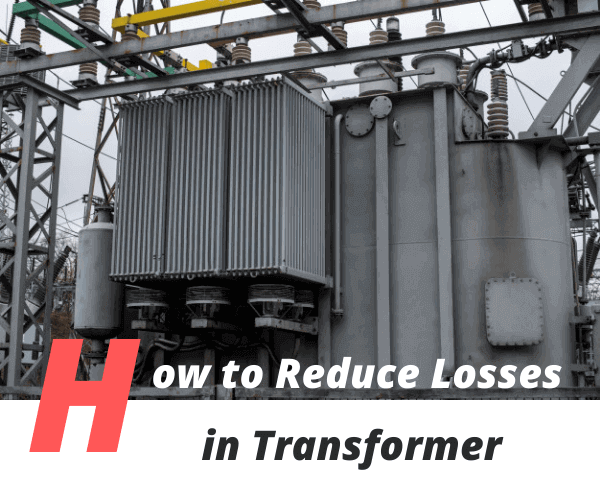

How to Reduce Losses in Transformer?: Must Know

One cannot imagine life without electricity. With so many daily appliances working on electricity, it is important to protect them from the damage caused by sudden power failures and voltage fluctuations. The transformer is one such power system equipment that caters to your appliances and protects them from any major damages.
They are used to modify an alternating current voltage running from one electric circuit to another with the help of electromagnetic induction. They are typically made up of two or more windings wound around an iron core that helps in increasing or decreasing the voltage of electrical tools. Like every other machine, transformers also have losses. Simply stating, the difference between input power and output power is considered as a loss. In this article, I will tell you about the types of transformer losses and how to reduce losses in a transformer.
How to Reduce Losses in Transformer?
When the input power is supplied to the transformer some portion of it is lost in compensating the core losses while the other portion is lost and dissipated as heat in its windings. These losses vary with loads but are mostly caused by windings and core losses in the machine. So what should you do to reduce these energy losses in transformers? An effective solution to reduce transformer loss is to make an energy-efficient system that has a larger core and good quality silicon steel for the core and thicker wires. Here, we have mentioned the types of transformer losses and ways in which each type can be reduced to achieve a more efficient machine.
Types of Transformer Losses
The various types of losses seen in transformers are iron loss, hysteresis loss, eddy current loss, copper loss, stray loss, and dielectric loss. Let us get to know more about these losses and what can be done to decrease it.
1. Iron loss
Iron loss, otherwise called core loss, is caused by the alternating flux in the core of the transformer. The iron loss can further be divided into hysteresis and eddy current loss.
2. Hysteresis loss
A hysteresis loop is traced out for each cycle of emf in the core. The energy that is wasted in the form of heat due to hysteresis is known as hysteresis loss. Let me tell you a simple trick on how to reduce hysteresis loss in a transformer. You can use a high-quality magnetic material that has the least hysteresis loop area for the core to reduce iron or core loss. One such material that can be used to laminate the core is silicon steel. High-grade steel is often used to manufacture the core.
3. Eddy current loss
In simple words, the loss in current flow due to eddy current is eddy current loss. Due to the constantly changing magnetic fields, there is a loss of current in the core. One easy solution for how to reduce eddy current losses in the transformer is to make the core by stacking thin sheets together. This will decrease the eddy current and hence the losses made by it too.
4. Copper loss
The current that is lost in the form of heat dissipation in the conductor of windings is known as copper loss. Copper loss, also known as ohmic loss, is entirely dependant on the primary and secondary currents flowing through the windings. It is a contributor to an inefficient transformer and can be reduced by using a larger copper gauge.
5. Stray loss
The eddy currents, produced in the transformer by leakage flux, produce losses known as stray losses. You may be familiar with the hum or buzzing noise near your machines. It is due to the stray fields that cause the components of the tank to vibrate. This type of loss can be reduced by using thin sheets of insulated iron.
6. Dielectric loss
Dielectric loss can be observed in the insulating materials of the transformer. If the oil gets deteriorated or the solid insulation gets damaged it decreases the quality of the system. It also affects the overall efficiency of the transformer. An effective way to reduce dielectric loss is to test the oil regularly and also maintain the insulation quality.
Final Thoughts
I hope this article has helped you to understand what transformer losses are, its types, and how to reduce it. Try the methods stated above to reduce any particular type of loss in your transformer. This will make your system function properly and more efficient.